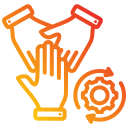Measuring Impact and Sustaining Momentum
Use brief surveys on psychological safety, cross-team trust, and communication clarity before and after the adventure. Pair numbers with quotes for context. Share results transparently and set goals together. Data builds credibility, and co-created targets keep the improvement journey inclusive and motivating.
Measuring Impact and Sustaining Momentum
Invite short voice notes or written reflections about pivotal moments, accommodations that helped, and ideas for next time. Stories spotlight what metrics miss, revealing practices that feel supportive. Comment with prompts you find useful, and we will feature community favorites in a future roundup.






